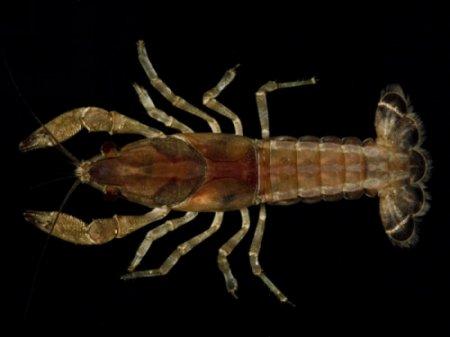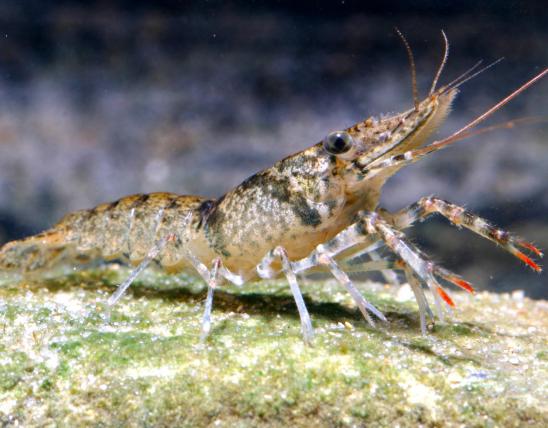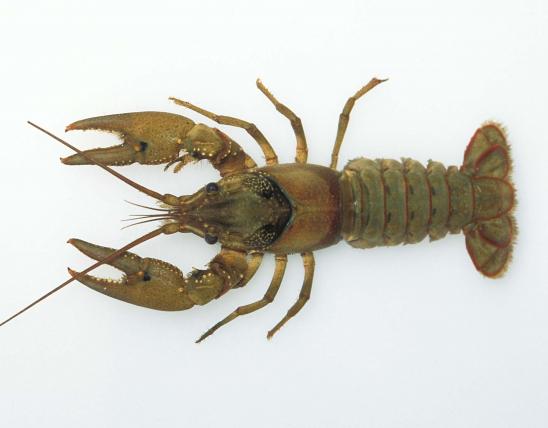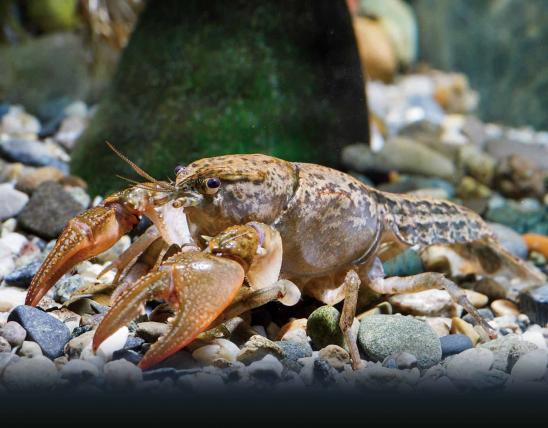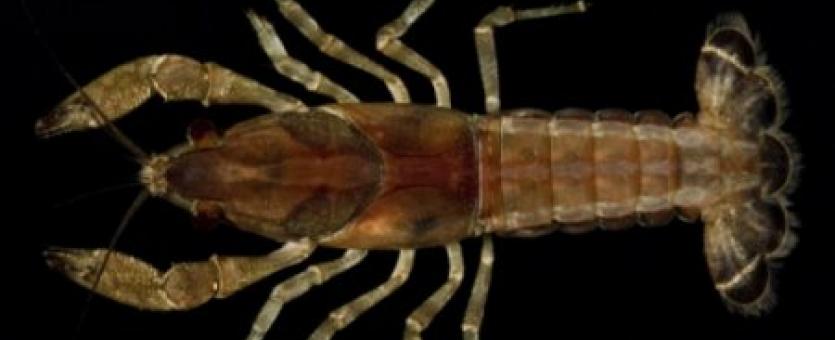
The shield crayfish is a small, tan crayfish with a pattern of paired blackish dashes lengthwise along the upper surface of the carapace and abdomen. The pincers are narrow and cylindrical, with short, abruptly tapering fingers. The areola (space in the middle of carapace) is very broad. The rostrum (pointy, noselike structure between the eyes) is broad and lacks lateral spines or notches. The reproductive structures (gonopods) of males have long, slender tips, and the right and left tips cross each other diagonally like sabers.
Similar species: Most other small crayfish found within the range of the shield crayfish, such as dwarf crayfish species and the young of other species, have a narrower rostrum, with lateral spines or notches near its tip. Many have the areola narrow or absent.
Adult length: about 1 to 2 inches.

This species occurs at scattered localities in southeastern Missouri, particularly along the boundary between Ozark and Lowland faunal regions (southeastern Ripley County and northeast to southern Bollinger County).
Habitat and Conservation
Specimens have been collected in winter and early spring from small, intermittent creeks and the shallows of seasonally flooded sloughs and swamps. This species retreats to burrows as water levels recede. Because their ditches are entirely dry for much of the year, this species spends much of the year in burrows. The burrows are usually dug into the bottom and sides of ditches and have inconspicuous entrance holes.
Food
Crayfish are generally omnivores, eating a wide variety of plant and animal materials.
Status
A species of conservation concern in Missouri. This is Missouri’s only crayfish in the genus Faxonella. One of the key characteristics of this genus is the unusual “crossed-saber” form of the male gonopods. Sex organs are often used to identify crayfish, insects, and other arthropods because their forms do not vary much within a species but differ consistently from other species. Other traits (like coloration) can vary a lot within a species or be influenced by the local environment.
Life Cycle
Most of the information about the life history of this species is from the state of Louisiana, where it is much more numerous. Apparently, in Missouri, this species reproduces in the fall, and hatching apparently occurs over a fairly prolonged period.
Human Connections
This species is associated with relatively undisturbed habitats, and it was probably more widely distributed in southeastern Missouri before that region was ditched and drained. Human-caused landscape changes can have profound effects on species distribution and presence.
Ecosystem Connections
Crayfish are an important link in the food chain between plants and other animals, breaking down plant materials that are resistant to decay. Crayfish in turn are an important food for many other animals.
